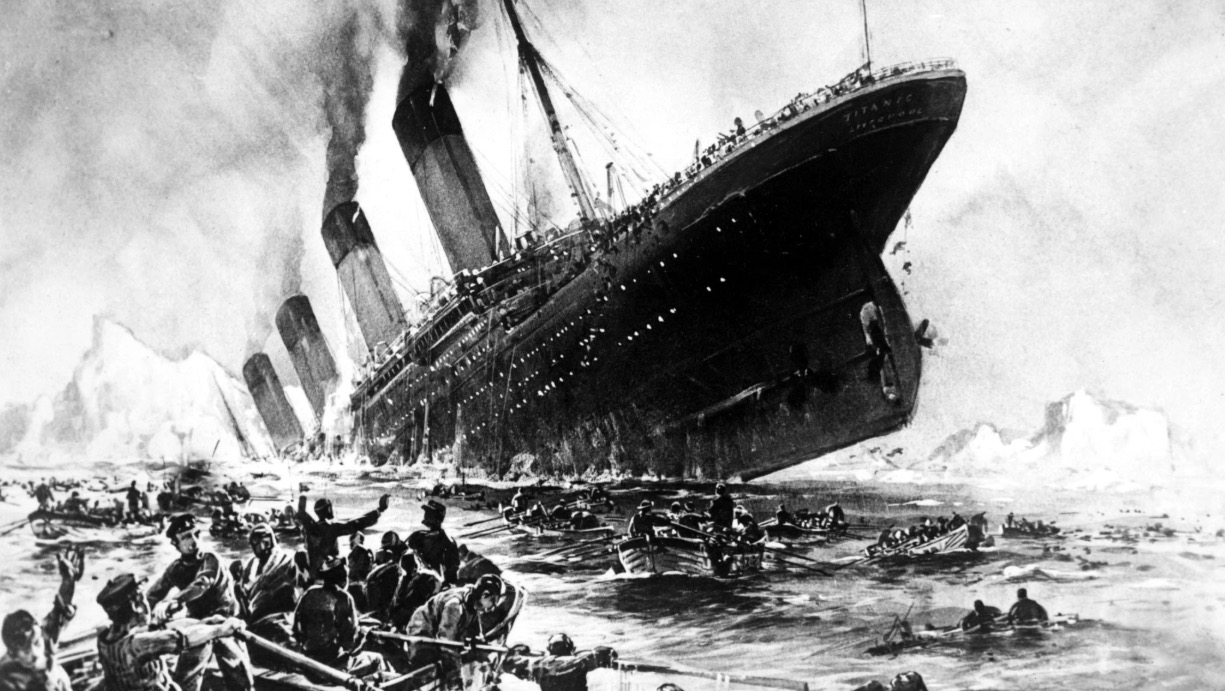
The RMS Titanic’s tragic sinking on April 15, 1912, continues to captivate the world more than a century later.
On its maiden voyage from Southampton to New York, the “unsinkable” ship struck an iceberg, leading to the deaths of over 1,500 passengers and crew.
Despite the catastrophic loss of life, one unsettling mystery has persisted — why were there so few bodies recovered from the wreckage, even though more than 1,500 people perished?
The discovery of Titanic’s wreckage
After decades of searching, the wreckage of the Titanic was discovered on September 1, 1985, more than 12,000 feet beneath the Atlantic Ocean.
After decades of speculation and attempts to locate it, an expedition finally succeeded in uncovering its location at the staggering depth.
It may seem strange that it took so long to find the wreck, but the problem wasn’t that its location was completely unknown — it was more about pinpointing its exact resting place.
Deep-sea explorer Robert Ballard spent eight days searching before successfully locating the R.M.S. Titanic, about 400 miles off the coast of Newfoundland, Canada. He was able to pinpoint the wreckage using his method of following debris—a technique he had first employed when discovering the Scorpion, a nuclear submarine that sank in 1968.

Ballard has previously spoken about the moment he saw the old ocean liner resting on the ocean floor.
We made a promise to never take anything from that ship, and to treat it with great respect,” he told CBS News.
But since then, expedition teams have recovered hundreds of artifacts, offering us a glimpse into the past — pieces of furniture, dinnerware, and personal belongings belonging to those who never made it off the ship. However, it became clear how poorly preserved some artifacts were when the first major expedition to recover items from the Titanic began in 1987.
Where did all the bodies go?
The wreck itself was found split in two, with the bow more intact, showing interiors was still remarkably preserved after over 70 years underwater. Around the wreckage, a massive debris field stretching 5 by 3 miles was discovered, with thousands of objects scattered across the ocean floor.
But something startling was missing: the bodies of the victims.
The absence of human remains is something that has puzzled historians and explorers alike.

While shoes, boots, and other personal items have been found in the debris, there are very few human remains to speak of. Out of the 337 bodies recovered, 119 were buried at sea, while 209 were returned to Halifax.
“I’ve seen zero human remains,” James Cameron, director of Titanic, who has visited and explored the wreck 33 times and claims to have spent more time on the ship than its captain, told the New York Times in 2012. “We’ve seen clothing. We’ve seen pairs of shoes, which would strongly suggest there was a body there at one point. But we’ve never seen any human remains.”
So, what happened to the many bodies?
The truth seems to lie in the fact that the Titanic wreckage lies deep in the ocean—far deeper than most people realize. At depths of over 12,000 feet, the water temperature hovers just above freezing, and the pressure is immense.
Over time, these conditions have led to the bodies being consumed by bacteria and sea creatures. The only remains that seem to survive are items like shoes and boots, as these materials are not edible to marine life.
The role of seawater in the disappearance of bones
But the absence of skeletons isn’t just about sea creatures.
Robert Ballard, the deep-sea explorer who first discovered the Titanic wreck, explains that at these depths, the seawater actually has the ability to dissolve bones. The water is under-saturated in calcium carbonate, which is a key component of bones. As the soft tissue is consumed, the bones themselves slowly dissolve, leaving no trace behind.
Ballard even noted a stark contrast with the Black Sea, where no such critters exist to devour bodies, and where the bones are preserved in a mummified state due to the lack of marine life to break them down.

“The issue you have to deal with is, at depth below about 3,000 feet [914 meters], you pass below what’s called the calcium carbonate compensation depth,” deep-sea explorer Robert Ballard told NPR.
”And the water in the deep sea is under saturated in calcium carbonate, which is mostly, you know, what bones are made of. For example, on the Titanic and on the Bismarck, those ships are below the calcium carbonate compensation depth, so once the critters eat their flesh and expose the bones, the bones dissolve.”
The eerie reality
The discovery of the wreck and its surrounding debris field has always sparked a mix of awe and horror.




